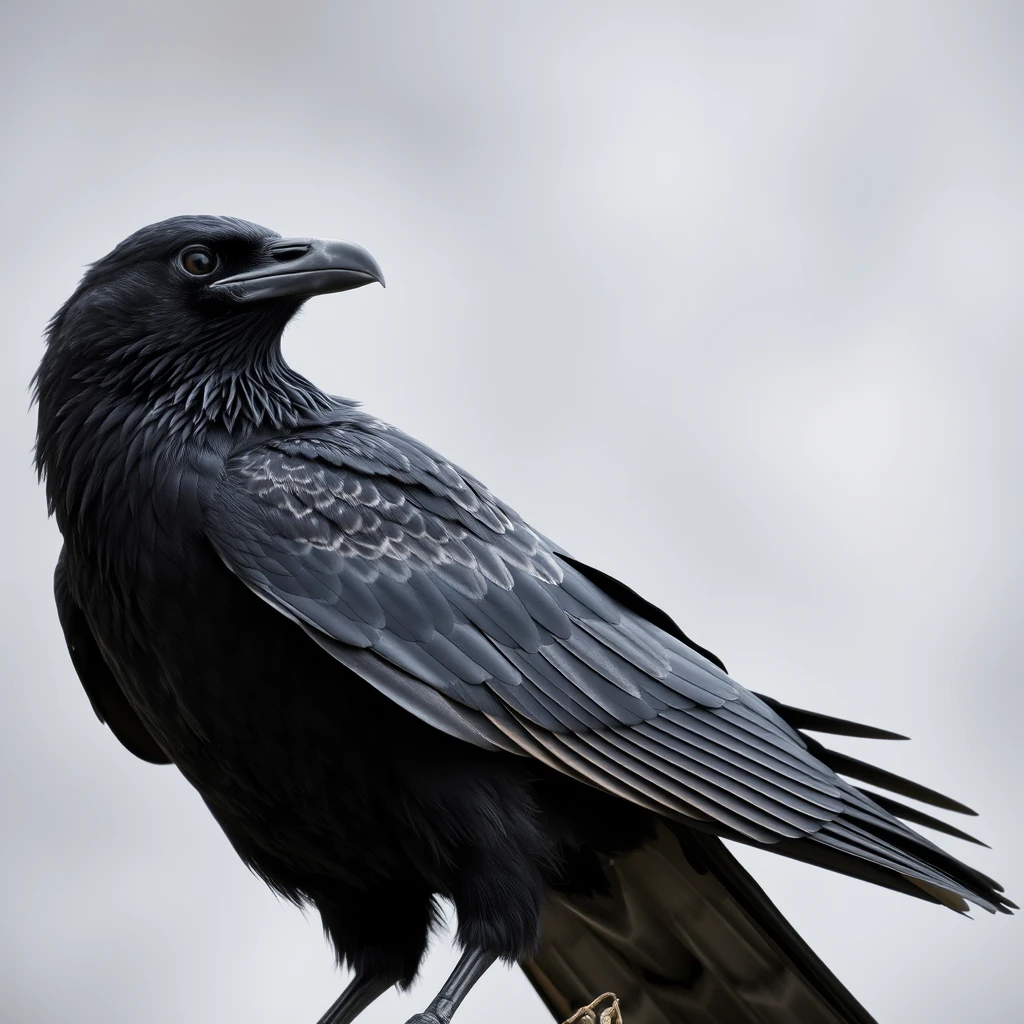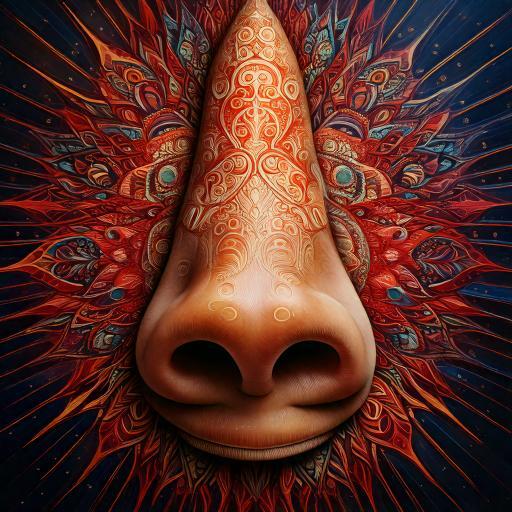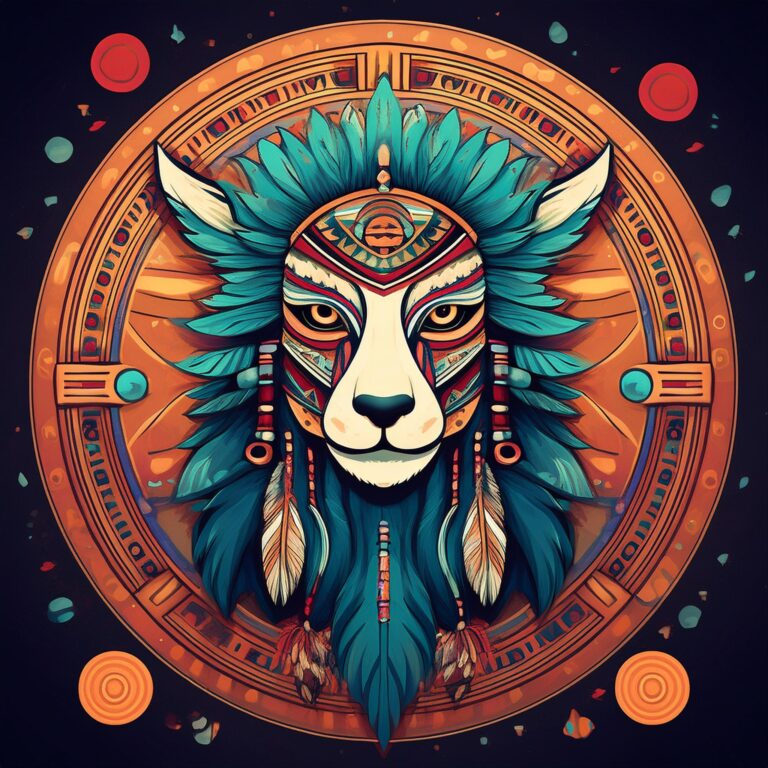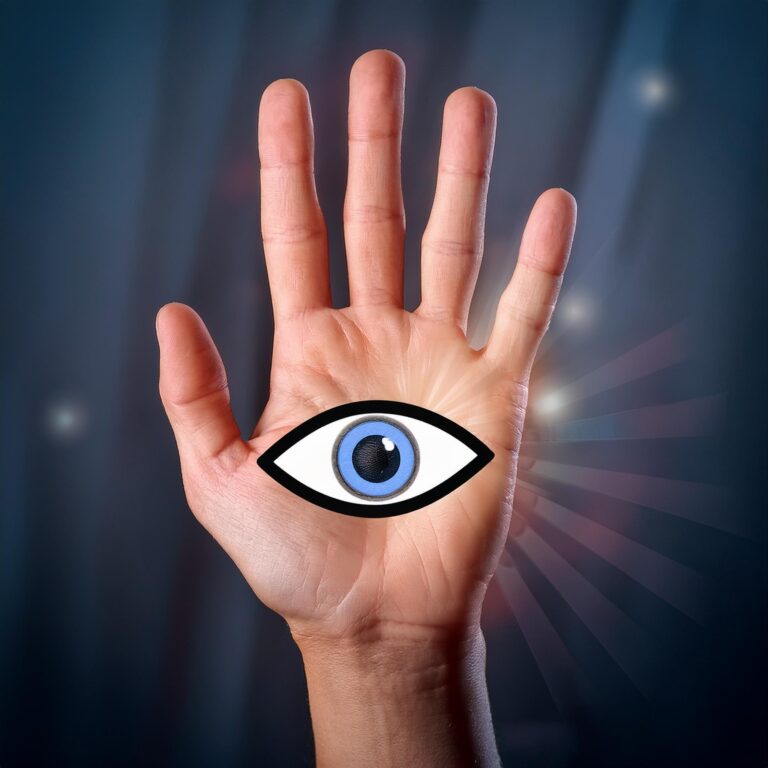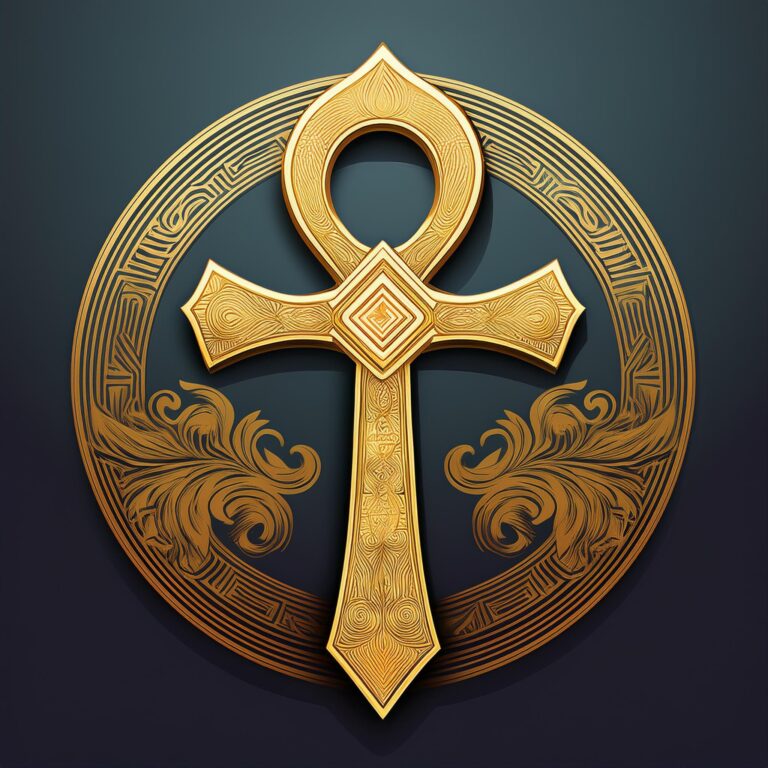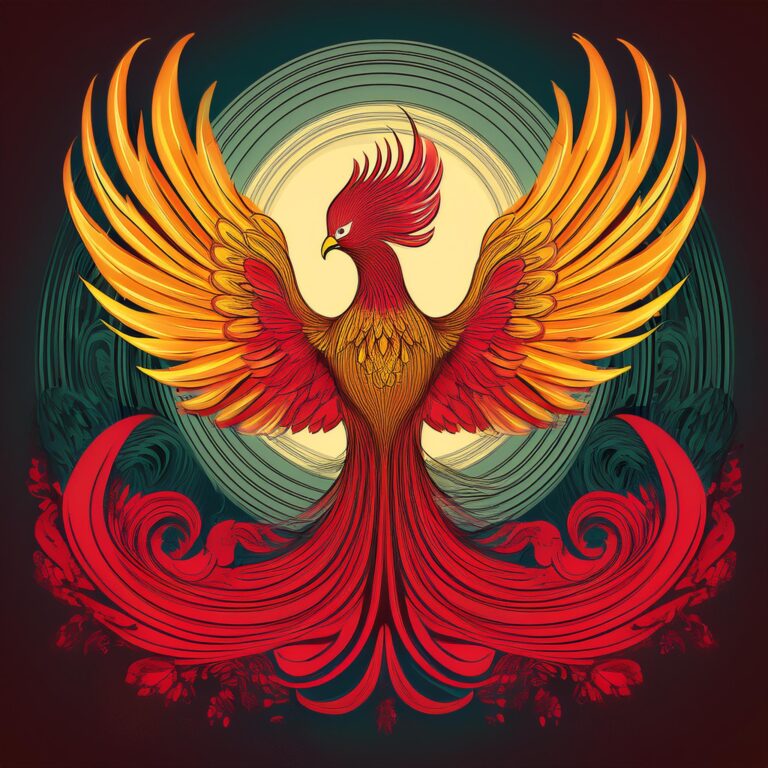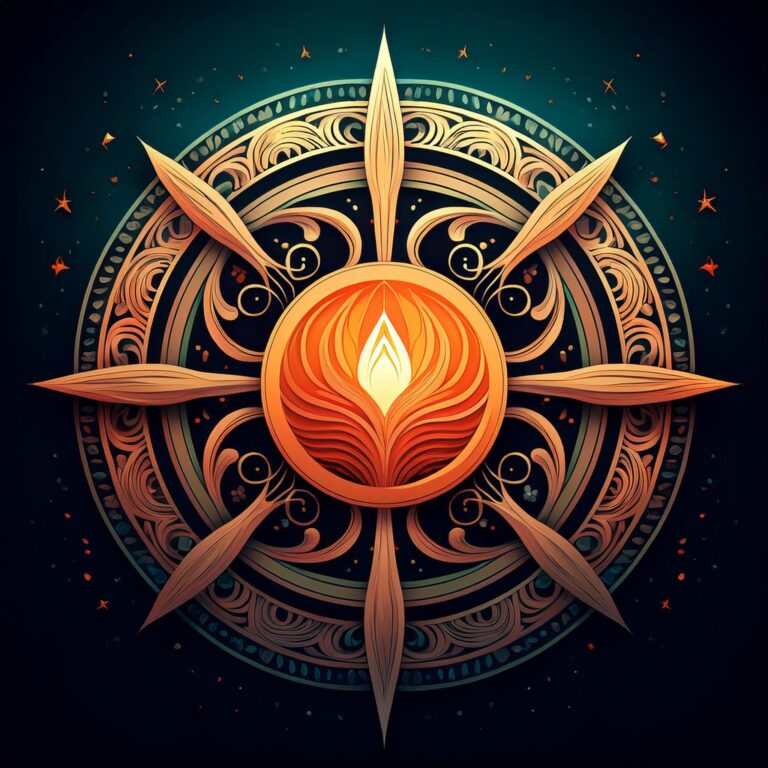Ravens have long been creatures of mystery and intrigue, often associated with both wisdom and darkness. When you see a raven, it’s natural to wonder what this encounter could mean. In this article, we’ll delve into the various interpretations of seeing a raven, exploring its significance in different cultures, spiritual contexts, and even in modern symbolism.
The Historical Significance of Ravens
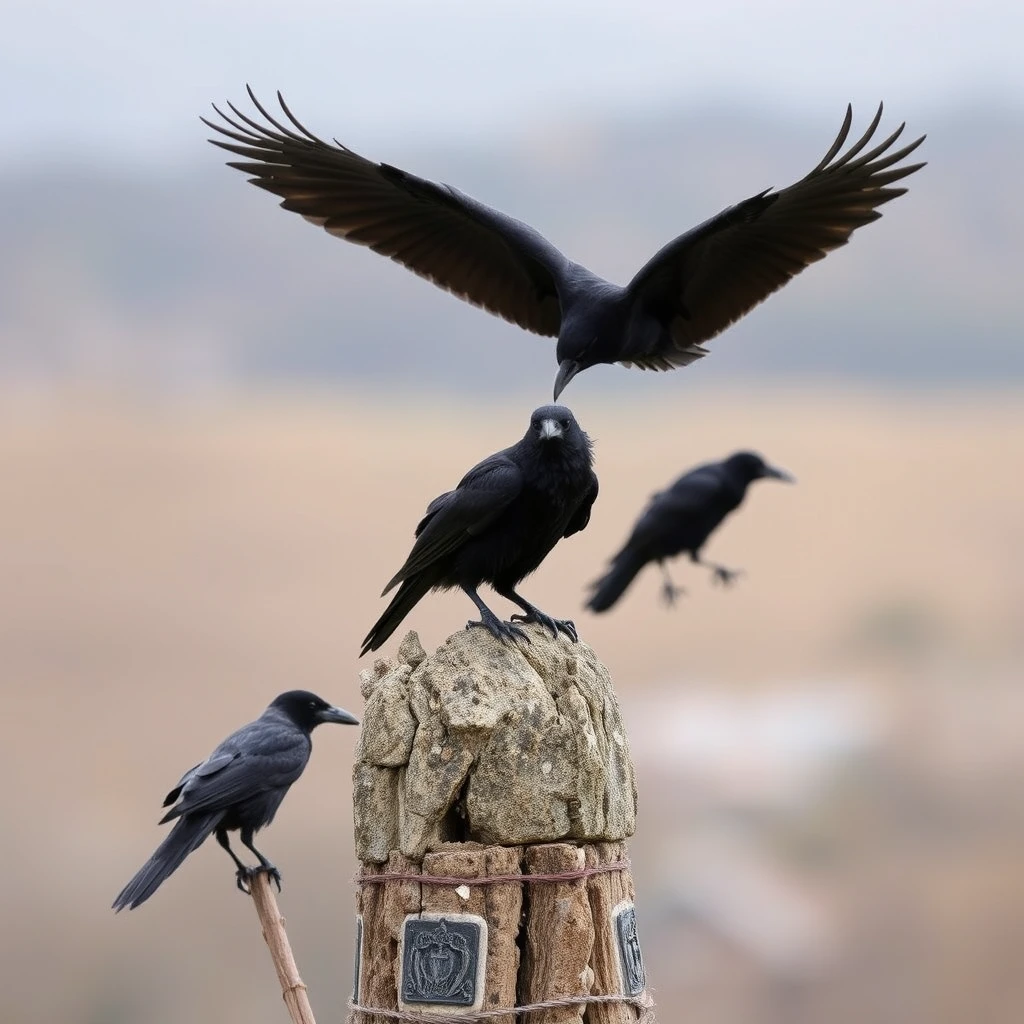
Ravens have played a significant role in the myths, legends, and beliefs of various cultures throughout history. These birds, known for their intelligence and mysterious aura, have been revered and feared in equal measure. From ancient civilizations to modern interpretations, ravens have consistently been seen as powerful symbols, often representing both the darker and more mystical aspects of the human experience. Ravens, much like the Lion of Judah, embody a duality that spans across cultures, representing both the ominous and the divine, and illustrating the complex nature of power and wisdom in human lore.
In Norse mythology, ravens are closely associated with Odin, the god of wisdom, war, and death. Odin’s two ravens, Huginn and Muninn, flew across the world each day, bringing him knowledge of all that happened. This connection between ravens and divine wisdom solidified their status as messengers of the gods, capable of traversing both the physical and spiritual realms.
Celtic traditions also hold ravens in high regard, particularly in connection with the Morrigan, a goddess of war and fate. The Morrigan often appeared in the form of a raven, signaling her presence on the battlefield and foreshadowing the outcome of the conflict. In this context, ravens were seen as omens, their appearance a harbinger of death and transformation.
In various folklore and superstitions, ravens have been both feared and respected. In many European cultures, they were considered symbols of death, often seen as omens when they appeared near homes. However, in other traditions, such as those of the Native American peoples, ravens were revered as creators and protectors, embodying transformation and the cycle of life.
Religious texts also feature ravens prominently. In the Bible, the raven is the first bird Noah sends out after the flood, representing exploration and the search for new beginnings. In Islamic tradition, a raven teaches Cain how to bury his brother, symbolizing knowledge and the transition from life to death.
The enduring legacy of ravens across these diverse cultures highlights their deep historical significance. Whether seen as harbingers of doom or symbols of wisdom and transformation, ravens continue to captivate the human imagination, their presence a reminder of the complex interplay between life, death, and the mysteries that lie beyond.
Ravens in Mythology and Folklore
Ravens are deeply embedded in the mythology and folklore of cultures around the world. Their striking appearance, intelligence, and enigmatic behavior have made them potent symbols in stories that span continents and centuries. Often associated with mystery, death, and transformation, ravens hold a unique place in the collective imagination of humanity.
In Norse mythology, ravens are intimately connected to Odin, the chief of the gods. Odin is often depicted with two ravens, Huginn (meaning “thought”) and Muninn (meaning “memory”), perched on his shoulders. These birds would fly across the world each day, gathering information and reporting back to Odin, symbolizing his vast wisdom and omniscience. Huginn and Muninn not only represent the power of knowledge and reflection but also the connection between the mortal world and the divine.
Celtic traditions also revere the raven, particularly in the context of the Morrigan, the goddess of war, fate, and death. The Morrigan often took the form of a raven, appearing on battlefields to guide warriors to the afterlife or to foretell the outcome of battles. The raven’s presence was seen as a powerful omen, indicating not only death but also the cyclical nature of life and rebirth. In this way, the raven was both a symbol of destruction and a harbinger of renewal.
In Native American folklore, ravens are frequently seen as creators and tricksters. Among the Haida people of the Pacific Northwest, the raven is a central figure in creation myths, credited with bringing light to the world by releasing the sun from a box. This act of creation highlights the raven’s role as a symbol of transformation, change, and the unpredictable nature of existence. In many tribes, the raven is also considered a protector, using its cunning and resourcefulness to help humanity.
In Greek mythology, the raven is associated with Apollo, the god of prophecy and the sun. According to legend, Apollo sent a white raven to spy on his lover, Coronis. When the raven returned with news of her unfaithfulness, Apollo, in a fit of rage, turned the raven’s feathers black. This story not only explains the raven’s dark plumage but also associates the bird with prophecy, knowledge, and sometimes ill omens.
Roman mythology also features ravens as prophetic birds. The Romans believed that ravens could foretell the future, and their behavior was often observed as a form of augury. A raven’s call or the direction it flew could be interpreted as a sign from the gods, guiding decisions on matters of war and peace.
In Japanese culture, ravens are seen as symbols of family loyalty and longevity. The Yatagarasu, a three-legged raven, is a divine creature in Shinto belief, often depicted as a guide or messenger of the gods. This mythical bird is said to lead the Emperor Jimmu on his journey, symbolizing divine intervention and protection.
Across these diverse mythologies and folklores, the raven embodies a dual nature. On one hand, it is a symbol of death, darkness, and the unknown; on the other, it represents wisdom, creation, and transformation. This duality is perhaps why ravens have remained such powerful symbols throughout history, capturing the human imagination with their mystery and depth.
Cultural Interpretations of Ravens Around the World
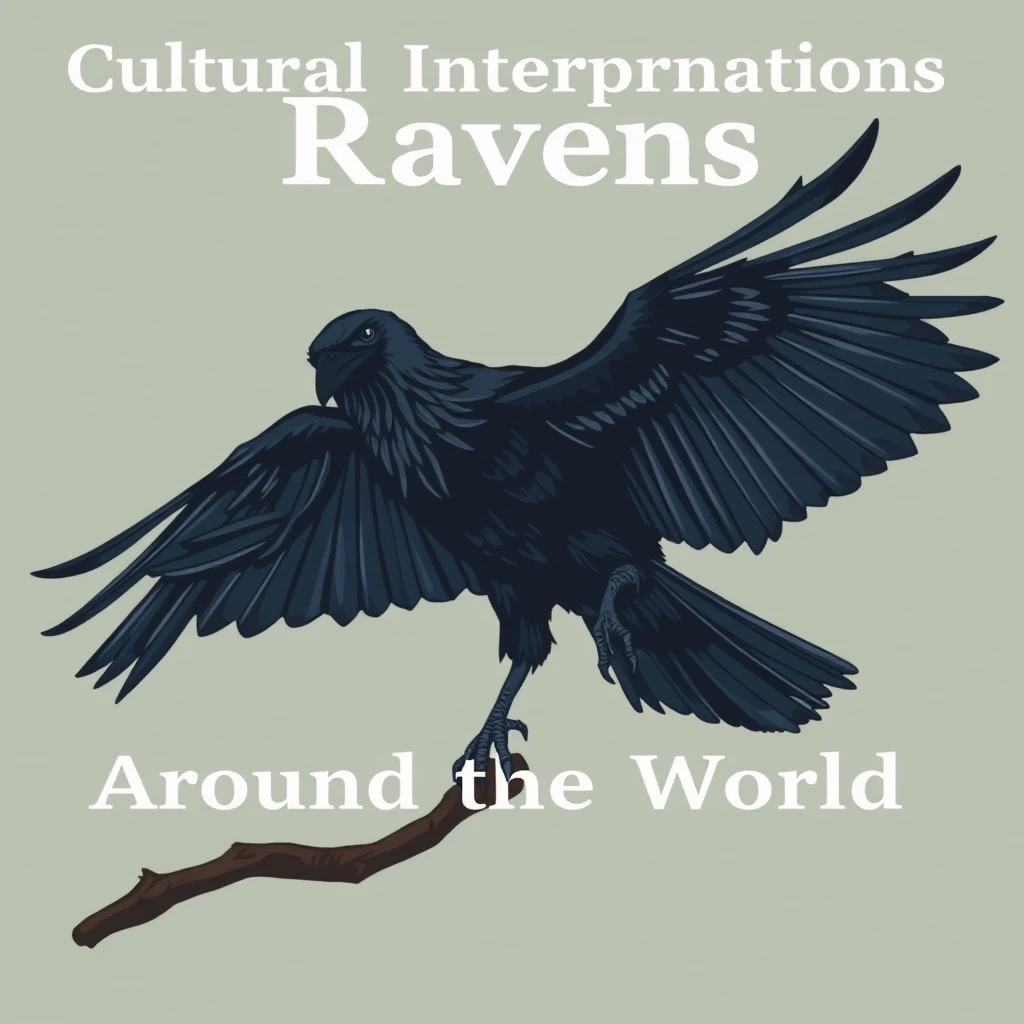
Ravens have captivated the human imagination for centuries, appearing as powerful symbols in cultures across the globe. Their dark plumage, sharp intelligence, and eerie calls have made them figures of mystery and intrigue, often associated with both the sacred and the profane. Here, we explore how different cultures interpret the raven and what it signifies in various parts of the world.
In Western cultures, particularly in Europe, ravens have often been viewed with a mixture of fear and reverence. In medieval Europe, ravens were commonly associated with death and were thought to be omens of bad luck or harbingers of doom. This perception likely stemmed from their black feathers and their presence on battlefields, where they would scavenge the dead. The raven’s reputation as a symbol of death was further cemented by literary works such as Edgar Allan Poe’s famous poem “The Raven,” where the bird represents despair and unrelenting sorrow.
However, not all Western interpretations are dark. In some folklore, ravens are seen as wise and resourceful creatures, capable of guiding lost souls or offering protection. For example, in Welsh mythology, the raven is linked to the god Bran the Blessed, a giant and king whose name means “raven.” Bran was a powerful protector and his association with ravens highlights their role as guardians and symbols of strength.
In many Native American cultures, ravens are revered as powerful spiritual beings with deep significance. Among the Haida and Tlingit peoples of the Pacific Northwest, the raven is considered a creator and a bringer of light. According to their creation myths, the raven was responsible for releasing the sun, moon, and stars into the sky, bringing light to the world and enabling life to flourish. This portrayal of the raven as a cunning and transformative figure contrasts sharply with the darker interpretations found in Europe.
In addition to being creators, ravens in Native American traditions are often seen as tricksters—mischievous beings who use their intelligence to outwit others, sometimes for the benefit of humanity and sometimes for their own amusement. Despite their trickery, ravens are generally regarded as benevolent, embodying the complex interplay between wisdom, cunning, and the forces of nature.
Asian cultures also offer unique perspectives on the raven. In Japanese mythology, the raven is known as Yatagarasu, a three-legged bird that serves as a divine guide. Yatagarasu is believed to have led the legendary Emperor Jimmu on his journey to establish Japan, symbolizing divine intervention and guidance. In this context, the raven is seen as a positive figure, representing direction, protection, and the will of the gods.
In Chinese culture, ravens are sometimes associated with the sun. An ancient Chinese myth tells of ten sun-birds, which were originally ravens, that resided in a mulberry tree in the Eastern Sea. Each day, one raven would carry the sun across the sky. This story emphasizes the raven’s connection to the celestial and the cyclical nature of life.
In the Middle East, ravens have both positive and negative connotations. In Islamic tradition, the raven is featured in the story of Cain and Abel, where it teaches Cain how to bury his brother after committing the first murder. This story positions the raven as a symbol of knowledge and a guide in the face of human suffering. Despite this, ravens are also seen as omens of death in some Middle Eastern cultures, echoing the themes found in Western beliefs.
In some African cultures, ravens are regarded as messengers and harbingers of change. For example, in certain African tribes, the appearance of a raven might be interpreted as a sign that important news or a significant event is on the horizon. This reflects the broader view of the raven as a bridge between the known and the unknown, a creature that traverses both worlds and brings important messages to humanity.
Despite the varied interpretations of ravens across different cultures, there is a common thread that ties them all together: the raven’s role as a powerful symbol of transformation, mystery, and the unknown. Whether seen as a creator, a trickster, or a harbinger of doom, the raven remains a deeply significant figure that continues to inspire and intrigue people around the world.
Ravens in Literature and Art
Ravens have long been a source of inspiration for writers and artists, symbolizing themes of mystery, death, and the supernatural. Their dark feathers, sharp beaks, and piercing eyes make them natural subjects for exploring the more enigmatic aspects of the human experience. Across various forms of literature and art, ravens have come to represent both the beauty and the terror of the unknown.
One of the most iconic representations of ravens in literature is Edgar Allan Poe’s famous poem, “The Raven.” First published in 1845, this work captures the essence of Gothic horror, with the raven symbolizing the narrator’s descent into madness. The bird’s repeated refrain of “Nevermore” echoes throughout the poem, reinforcing the themes of loss, despair, and the finality of death. Poe’s raven is not just a bird but a manifestation of the narrator’s grief and his obsession with the past, making it one of the most enduring symbols in literary history.
In William Shakespeare’s works, ravens often appear as ominous figures. For example, in Macbeth, the raven is mentioned in the line, “The raven himself is hoarse that croaks the fatal entrance of Duncan under my battlements.” Here, the raven foreshadows the impending murder of King Duncan, linking the bird to themes of fate, death, and the dark consequences of ambition.
Ravens also feature prominently in folk tales and legends from around the world. In many of these stories, they are depicted as wise, cunning creatures with the ability to speak or transform. These tales often explore the duality of the raven’s nature, portraying it as both a trickster and a guide, capable of leading characters toward either wisdom or ruin.
In visual art, ravens have been depicted in a variety of ways, from realistic portrayals to more abstract interpretations. Artists have often used ravens to explore themes of death, mystery, and the supernatural, much like their literary counterparts.
The Symbolist movement of the late 19th and early 20th centuries frequently featured ravens as symbols of the unknown and the mystical. Artists like Odilon Redon used the raven in their work to evoke feelings of unease and to delve into the subconscious mind. Redon’s dark, moody compositions often placed ravens in surreal, dreamlike settings, blurring the line between reality and imagination.
In modern art, ravens continue to be a popular subject, often used to represent the darker aspects of human experience. For example, in the works of contemporary artists like Kara Walker, ravens are employed to explore themes of race, history, and identity. Walker’s use of the raven in her silhouettes and installations adds layers of meaning, connecting the bird to a broader commentary on power and the human condition.
Photography also embraces the raven as a powerful symbol. The stark contrast of the raven’s black feathers against various backgrounds allows photographers to create striking, dramatic images. Ravens are often used in gothic and dark art photography to convey a sense of mystery, death, and the passage of time.
Beyond traditional literature and art, ravens have made their way into popular culture, appearing in films, television shows, and even video games. In these mediums, they often retain their associations with death and mystery but are also given new roles as symbols of wisdom, protection, or even vengeance.
In George R.R. Martin’s “A Song of Ice and Fire” series (and its television adaptation Game of Thrones), ravens are used as messengers, carrying important news across the realm. The raven’s role in this fantasy world reflects its historical association with communication and prophecy, while also adding a layer of intrigue to the narrative.
In video games like The Elder Scrolls series, ravens are often featured as familiars or guides, helping players navigate through dark, mysterious landscapes. Their presence in these games reinforces their symbolic connection to exploration, the unknown, and the supernatural.
Throughout history, ravens have captivated artists and writers with their mysterious presence and symbolic power. Whether as harbingers of doom, symbols of wisdom, or embodiments of the unknown, ravens continue to inspire creative minds across all forms of media. Their enduring appeal lies in their ability to evoke deep emotions and to represent complex themes that resonate with the human experience.
Spiritual and Mystical Meanings of Ravens
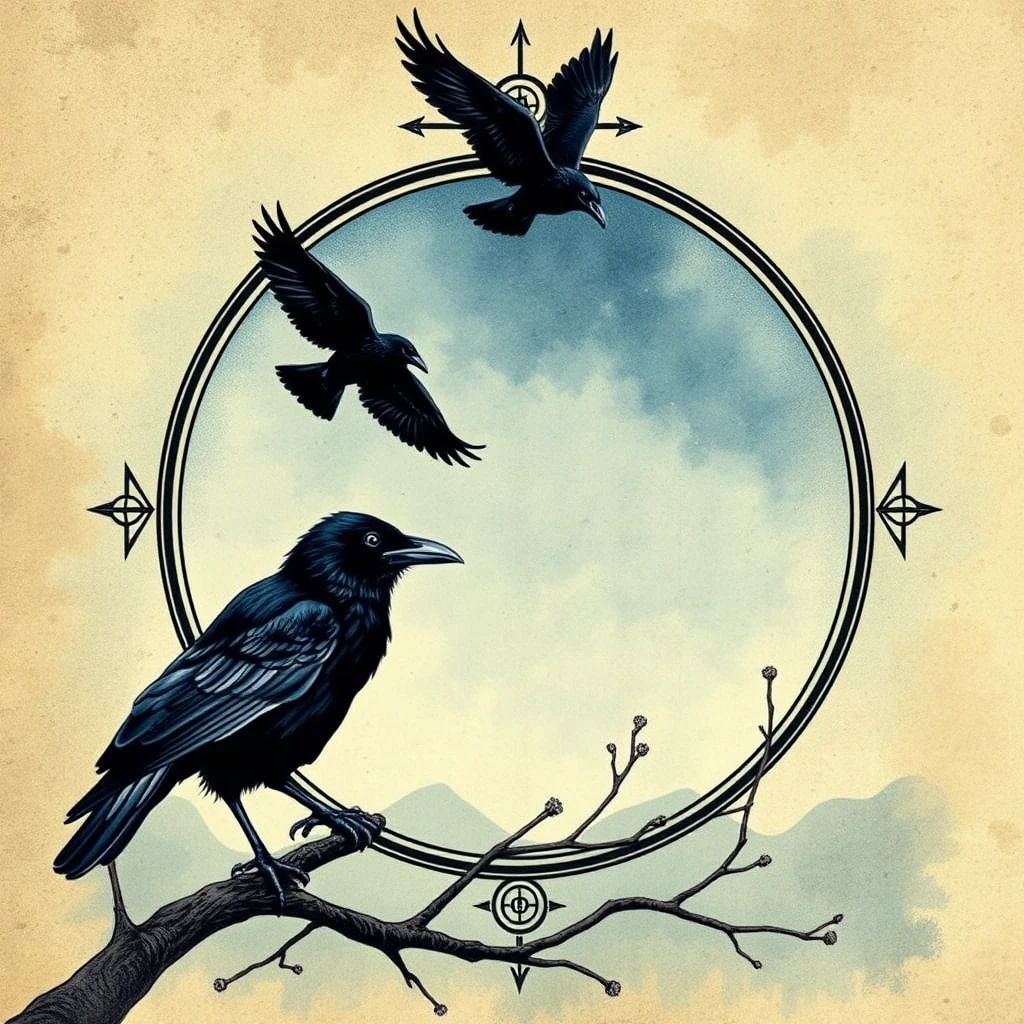
Ravens have long been revered not only for their physical presence but also for their deep spiritual and mystical significance. Across various cultures and belief systems, these enigmatic birds are seen as messengers, guides, and symbols of transformation. Their connection to the spiritual realm makes them powerful totems and symbols of the mysteries of life and death.
In many spiritual traditions, ravens are viewed as intermediaries between the physical world and the spiritual or supernatural realms. Their ability to traverse both realms is believed to allow them to carry messages from the gods or the deceased to the living. This is particularly evident in Norse mythology, where Odin’s ravens, Huginn and Muninn, fly across the world each day, gathering knowledge and bringing it back to their master. This connection between ravens and divine wisdom highlights their role as bearers of sacred messages and protectors of spiritual secrets.
Similarly, in Native American spirituality, ravens are often seen as powerful guides who assist in the journey between life and death. For tribes such as the Haida and Tlingit, ravens are not only creators but also guides who help souls transition from one state of existence to another. This belief underscores the raven’s role as a symbol of transformation and the cyclical nature of life, death, and rebirth.
The raven’s association with transformation is a common theme in many spiritual and mystical traditions. In alchemy, a discipline that seeks to transform the base elements of existence into higher spiritual forms, the raven is often depicted as a symbol of the Nigredo stage. This stage represents the death and decay necessary for spiritual rebirth, with the raven symbolizing the dark night of the soul that precedes enlightenment. The raven’s black feathers are seen as representing the prima materia, the raw, unformed matter that must undergo transformation to achieve spiritual purity.
In Celtic spirituality, ravens are linked to the goddess Morrigan, who presides over war, fate, and death. The Morrigan often appears in the form of a raven, signaling the end of one life and the beginning of another. Here, the raven’s role is dual: it is both a harbinger of death and a symbol of the renewal that follows. This duality reflects the broader spiritual belief that death is not an end but a transformation into a new state of being.
Ravens are also seen as keepers of sacred knowledge, guarding the mysteries of the universe and the wisdom of the ancients. In many shamanic traditions, the raven is revered as a powerful spirit animal or totem, representing a deep connection to the unseen forces of the world. Shamans may call upon the raven for guidance, wisdom, and protection during spiritual journeys or rituals. The raven’s ability to navigate both the physical and spiritual realms makes it an ideal guide for those seeking to uncover hidden truths or gain insight into the mysteries of existence.
In esoteric teachings, the raven is often associated with the deeper, more hidden aspects of spiritual knowledge. Its black plumage is symbolic of the dark, unknowable aspects of the cosmos, while its keen intellect and sharp eyes represent the ability to see beyond the surface and into the depths of spiritual truth. The raven’s connection to the occult and the mystical has made it a prominent symbol in various mystical and magical traditions, where it is often invoked for protection, wisdom, and the revelation of secrets.
In modern spiritual practices, ravens continue to hold a significant place as symbols of intuition, insight, and spiritual growth. Many people who feel a connection to the raven see it as a totem animal that guides them through periods of change and transformation. The raven’s presence in one’s life may be interpreted as a sign to embrace the unknown, trust in one’s inner wisdom, and prepare for a journey of personal or spiritual growth.
For those who practice divination, the raven can be a powerful symbol in tarot readings, dreams, and other forms of spiritual insight. Its appearance might suggest that the seeker is at a crossroads, facing a significant transformation, or that they need to pay attention to the messages coming from their subconscious or the spiritual realm.
The spiritual and mystical meanings of ravens are as complex and varied as the cultures that revere them. Whether seen as messengers between worlds, symbols of transformation, or guardians of sacred knowledge, ravens continue to inspire awe and reverence in those who seek to understand the deeper mysteries of life. Their presence in spiritual practices around the world is a testament to their enduring power as symbols of the unknown and the unseen forces that shape our lives.
The Psychological Impact of Seeing a Raven
Encountering a raven can have a profound psychological impact, often stirring deep emotions and triggering subconscious associations. These reactions are rooted in centuries of cultural symbolism and personal experiences, making the raven not just a bird, but a powerful symbol that resonates on a psychological level. The sight of a raven can evoke a range of feelings, from awe and curiosity to fear and foreboding, depending on the context and the individual’s personal beliefs.
Ravens are often associated with themes of death, mystery, and the unknown, which can trigger strong emotional responses when encountered in real life. The cultural conditioning that links ravens to ominous or mystical events plays a significant role in how people perceive these birds. For example, if someone has been exposed to stories or legends where ravens are depicted as harbingers of doom, seeing one might elicit feelings of anxiety or apprehension. This reaction is not just a product of the present moment but is deeply rooted in the collective unconscious, where symbols like the raven carry significant weight.
In Carl Jung’s theory of the collective unconscious, symbols such as the raven are considered archetypes—universal, primordial images that reside in the unconscious mind of all humans. When we encounter these archetypes in real life, they can evoke powerful emotional and psychological responses. For many, the raven is an archetype of death, transformation, and the mysteries of the unknown, and its appearance can bring these themes to the forefront of consciousness.
The raven’s dark, mysterious nature often encourages introspection and self-reflection. Psychologically, seeing a raven can act as a mirror, prompting individuals to explore their inner thoughts, fears, and desires. This is especially true for those who are attuned to the symbolic meaning of the raven and its connection to deeper psychological themes. The bird’s presence might lead someone to reflect on their own life, contemplating aspects of mortality, change, or the unknown future.
For those going through significant life transitions, seeing a raven might symbolize the end of one phase and the beginning of another. This can be both a comforting and unsettling realization, depending on the individual’s current emotional state. The raven, as a symbol of transformation, can serve as a reminder that change is a natural part of life and that facing it with courage and wisdom is essential for personal growth.
Personal beliefs and experiences also play a crucial role in determining the psychological impact of seeing a raven. For some, the raven is a positive symbol of wisdom, protection, or guidance. These individuals might feel a sense of reassurance or connection when they see a raven, interpreting it as a sign that they are on the right path or that they are being watched over by a higher power. This positive interpretation can provide comfort and strength, especially during challenging times.
Conversely, for those who associate ravens with negative omens or who have had unsettling experiences with the bird, seeing a raven can induce fear, anxiety, or even paranoia. This reaction is often exacerbated by the mind’s tendency to search for meaning in random events, leading to a heightened state of alertness or dread. In these cases, the raven acts as a trigger for deep-seated fears or unresolved psychological issues, bringing them to the surface in a way that can be both disturbing and enlightening.
The psychological impact of ravens is also evident in dreams, where they often appear as symbols of the unconscious mind. Dreaming of a raven can indicate that the dreamer is grappling with issues related to death, transformation, or the unknown. In Jungian psychology, such dreams are seen as messages from the unconscious, urging the dreamer to confront these themes and integrate them into their conscious awareness.
A raven in a dream might also represent a guide or protector, helping the dreamer navigate through difficult emotional landscapes. The bird’s presence in the dream world can be a sign that the dreamer is being guided through a period of personal or spiritual growth, with the raven acting as a symbol of wisdom and insight.
The psychological impact of seeing a raven is inherently dualistic. On one hand, the bird can evoke fear and unease due to its association with death and darkness. On the other hand, it can also fascinate and inspire, serving as a symbol of wisdom, transformation, and the unknown. This duality reflects the broader human experience of grappling with life’s mysteries, where fear and curiosity often go hand in hand.
Ultimately, the psychological impact of seeing a raven depends on a complex interplay of cultural, personal, and subconscious factors. Whether viewed as a harbinger of doom or a symbol of protection, the raven remains a powerful figure in the human psyche, capable of stirring deep emotions and prompting profound reflection.
Modern Symbolism of Ravens in Pop Culture
Ravens have cemented their place in modern pop culture as symbols of mystery, intelligence, and the supernatural. Their dark allure and rich symbolic history have made them popular figures in movies, television, literature, and even video games. In contemporary narratives, ravens continue to embody the complex themes of death, transformation, and the unknown, while also taking on new meanings that resonate with today’s audiences.
In the world of film and television, ravens are frequently used to evoke a sense of foreboding or to signal a connection to the mystical and the otherworldly. Their association with darkness and mystery makes them ideal symbols in horror, fantasy, and thriller genres.
For example, in the popular television series “Game of Thrones,” ravens are used as messengers across the vast kingdom of Westeros. These birds are not just practical tools for communication; they also symbolize the impending doom and the ever-present threat of danger, especially as they are often linked with the ominous Three-Eyed Raven, a mystical figure who possesses the ability to see the past, present, and future. This portrayal emphasizes the raven’s connection to prophecy, wisdom, and the supernatural.
In Alfred Hitchcock’s classic film “The Birds,” ravens and other birds take on a more menacing role, representing nature’s unpredictable and potentially dangerous power. The ravens in this film contribute to the growing sense of dread and chaos, turning what are typically seen as ordinary creatures into symbols of terror and the unknown.
Ravens have a strong presence in modern literature and graphic novels, where they often serve as symbols of death, introspection, or hidden knowledge. One of the most famous modern literary works featuring a raven is Neil Gaiman’s “The Sandman” series, where a character named Matthew the Raven acts as a companion and guide to the protagonist, Dream. Matthew’s character embodies the raven’s association with the afterlife, as he was once a human who was transformed into a raven after death. His role in the story highlights the bird’s connection to the transition between life and death, as well as its role as a guardian of knowledge.
In Edgar Allan Poe’s “The Raven,” the titular bird is a symbol of unending sorrow and the haunting nature of loss. This poem has had a lasting impact on how ravens are perceived in pop culture, cementing their role as symbols of melancholy and the inescapable grip of memory.
In the realm of video games, ravens are often portrayed as guides, protectors, or symbols of the dark, mystical forces that players must confront. In games like “The Elder Scrolls” series, ravens appear as familiars or spiritual guides, helping players navigate through challenging quests or offering cryptic clues. Their presence in these games reinforces the raven’s connection to the mystical and the unknown, providing players with a sense of guidance in their virtual journeys.
In “Assassin’s Creed: Valhalla,” the protagonist Eivor is accompanied by a raven named Sýnin, which means “insight” or “vision” in Old Norse. Sýnin acts as a scout, allowing players to survey areas from above, symbolizing the raven’s role as a provider of perspective and a bearer of hidden knowledge. This modern interpretation of the raven draws on its traditional symbolism while adapting it to the interactive medium of video games.
Ravens have also found their way into music and fashion, where they are often used to convey themes of rebellion, darkness, and mystery. In gothic and alternative music, ravens are frequently referenced in lyrics and album art to evoke a sense of melancholy or to symbolize the darker aspects of the human experience.
In fashion, the raven’s black plumage and sleek appearance have made it an icon in gothic and punk subcultures. Clothing, accessories, and tattoos featuring raven imagery are popular among those who identify with these subcultures, where the bird represents individuality, introspection, and a connection to the mysterious or the arcane.
While ravens continue to be associated with traditional themes of death and mystery, modern pop culture has expanded their symbolic range. Today, ravens also represent intelligence, resilience, and even rebellion. They have become versatile symbols that can be adapted to a wide variety of narratives and genres, reflecting the complexities of contemporary life.
In an age where people are constantly navigating uncertainties and exploring the unknown, the raven’s enduring presence in pop culture speaks to its powerful and multifaceted symbolism. Whether as a messenger of doom or a guide to hidden wisdom, the raven remains a potent symbol in modern storytelling, capturing the imagination of audiences worldwide.
How to Interpret the Appearance of a Raven in Your Life
Seeing a raven, whether in real life or in a dream, often feels significant, as if the universe is trying to send you a message. Ravens have been revered for their intelligence and mystical qualities across various cultures, and their appearance is often seen as a symbol loaded with deep meaning. Understanding how to interpret the appearance of a raven in your life can offer valuable insights into your current circumstances, emotions, and the challenges you might be facing.
When a raven appears to you, it may be prompting you to reflect on your current life situation. Ravens are often associated with transformation and change, so their presence could indicate that you are at a pivotal moment in your life. Perhaps you are facing a significant decision, undergoing a personal transformation, or standing on the brink of a new phase in your journey. The raven’s appearance might be urging you to take a step back, reassess your path, and prepare for the changes ahead.
To interpret the raven’s message, consider what is currently happening in your life. Are you experiencing challenges or transitions? The raven might be encouraging you to embrace change and view it as an opportunity for growth rather than something to fear.
Ravens are often seen as symbols of mystery and the unknown. If a raven has made its presence known to you, it could be a sign that you need to embrace uncertainty and be open to the mysteries of life. This might involve letting go of the need for control and trusting in the natural flow of events. The raven’s message here is to be curious and unafraid of what lies ahead, as it could lead to new opportunities and deeper understanding.
Consider areas in your life where you may be resisting the unknown or clinging to certainty. The raven’s appearance could be a gentle nudge to release these fears and step into the future with an open heart and mind.
The raven’s deep connection to the subconscious mind and the spiritual world often makes its appearance a call for introspection. This bird encourages you to look within and explore the hidden aspects of yourself. Are there unresolved emotions, fears, or desires that you’ve been avoiding? The raven might be guiding you to face these internal challenges head-on.
To engage in this introspection, you might consider practices like meditation, journaling, or simply spending time alone in contemplation. The raven’s presence suggests that it’s time to delve deeper into your inner world, to uncover truths that may have been obscured by the distractions of daily life.
In many cultures, ravens are seen as protectors and guides, particularly in times of uncertainty or danger. If a raven appears to you, it could be a sign that you are being watched over and protected by spiritual forces. This presence might offer comfort and reassurance, especially if you are going through a difficult period. The raven’s guidance can help you navigate through challenges, offering wisdom and insight along the way.
Pay attention to your instincts and intuition when a raven appears. It could be encouraging you to trust your inner guidance and to know that you are not alone on your journey.
Ravens are also closely associated with the cycles of life and death. Their appearance might remind you of the cyclical nature of existence—birth, life, death, and rebirth. This can be especially poignant during times of loss or significant change. The raven’s presence can serve as a reminder that every ending is also a beginning and that life’s cycles are natural and necessary.
Reflect on the cycles currently at play in your life. Whether you are experiencing an end or a beginning, the raven’s appearance could be offering you comfort and understanding, helping you to see the bigger picture of your journey.
Ravens are known for their intelligence and problem-solving abilities. When a raven appears, it might be encouraging you to tap into your own wisdom and use your intellect to navigate complex situations. The raven’s message could be to trust your knowledge and experience, to think critically, and to approach challenges with creativity and insight.
If you are facing a problem that seems insurmountable, the raven’s appearance might be a sign to look at it from a new perspective. Use your intelligence and resourcefulness to find a solution, and don’t be afraid to seek out new information or advice.
Ravens are often seen as messengers between the physical and spiritual worlds. If you’ve encountered a raven, it might be a sign that you are being called to explore your spiritual side more deeply. This could involve paying attention to signs and synchronicities, engaging in spiritual practices, or seeking out spiritual guidance.
Consider how the raven’s appearance might relate to your spiritual journey. It could be a signal to deepen your connection to the divine, to explore spiritual teachings, or to trust in the guidance you receive from the universe.
Interpreting the appearance of a raven in your life is a deeply personal process, influenced by your beliefs, experiences, and current circumstances. Whether the raven appears as a symbol of change, a guide through the unknown, or a reminder of the cycles of life, its presence is significant. By paying attention to the context in which the raven appears and reflecting on its potential messages, you can gain valuable insights into your life and the path you are on.
Symbols Our Readers Are Asking About
Our readers are deeply interested in the rich and diverse world of symbolism, often seeking to uncover the meanings behind various symbols they encounter in their daily lives, dreams, or cultural contexts. From ancient emblems to contemporary icons, the symbols our readers inquire about reflect a wide range of interests and curiosities. Here, we explore some of the most frequently asked-about symbols and provide insights into their meanings and significance.
1. Owls: Wisdom and Mystery
One of the most frequently asked-about symbols is the owl. Often associated with wisdom, knowledge, and the mysteries of the night, owls are revered in many cultures as symbols of insight and intuition. Our readers are particularly interested in the owl’s connection to ancient deities like Athena, the Greek goddess of wisdom, and in its role as a guide in times of uncertainty.
In modern contexts, the owl is also seen as a protector of sacred knowledge and a reminder to trust one’s intuition. Many readers report seeing owls in dreams or as real-life encounters, prompting them to seek a deeper understanding of what this nocturnal bird might be signaling about their current life situations.
2. The Phoenix: Rebirth and Renewal
The mythical phoenix, known for rising from its ashes, is another symbol that captivates our readers’ imaginations. Representing rebirth, transformation, and renewal, the phoenix is often inquired about during times of personal change or after experiencing significant losses. Our readers are drawn to the idea of the phoenix as a symbol of resilience and the endless cycles of death and rebirth that define the human experience.
This symbol’s popularity is particularly notable among those going through life transitions, such as career changes, the end of relationships, or periods of intense personal growth. The phoenix serves as a powerful reminder that from the ashes of the old, something new and vibrant can emerge.
3. The Tree of Life: Connection and Growth
The Tree of Life is a universal symbol of connection, growth, and the interconnectedness of all living things. Our readers often ask about this symbol in relation to their spiritual journeys, family heritage, or personal development. The Tree of Life represents the idea that all aspects of life are connected and that growth is an ongoing process that involves both roots (our past and foundation) and branches (our future and potential).
Readers interested in genealogy, spiritual practices, or personal growth often find comfort in the Tree of Life, as it serves as a visual reminder of their place within the larger web of existence.
4. The Eye of Horus: Protection and Healing
The Eye of Horus, an ancient Egyptian symbol of protection, health, and restoration, is frequently asked about by readers interested in ancient cultures and protective symbols. This symbol, resembling a stylized eye, is believed to ward off evil and bring healing energies to those who wear it or keep it close.
Our readers often inquire about the Eye of Horus when seeking protection or when exploring symbols related to healing and well-being. The enduring appeal of this symbol highlights the human desire for safety, security, and the restoration of balance in life.
5. The Crescent Moon: Femininity and Cycles
The crescent moon is a symbol deeply connected to femininity, cycles, and the rhythm of time. Often associated with goddesses and lunar deities, the crescent moon represents the waxing and waning phases of life and the continual process of change and renewal. Readers are particularly interested in this symbol for its connection to intuition, emotions, and the divine feminine.
Many inquiries about the crescent moon come from those exploring their spiritual paths or those who feel a strong connection to lunar energy. This symbol is also popular among readers who practice astrology, Wicca, or other nature-based spiritual traditions.
6. The Labyrinth: Journey and Self-Discovery
The labyrinth, with its winding, intricate paths, is a symbol of the journey of self-discovery and the quest for enlightenment. Unlike a maze, a labyrinth has a single path that leads to the center, symbolizing the journey inward and the return to the self. Our readers often ask about this symbol when they are at a crossroads in life, seeking guidance on their spiritual journey or trying to find clarity and purpose.
The labyrinth serves as a metaphor for life’s complexities and the importance of perseverance, introspection, and the pursuit of inner wisdom. Readers are drawn to the idea that, despite the twists and turns of life, there is a clear path to the center—a place of understanding and enlightenment.
7. The Feather: Lightness and Spiritual Messages
Feathers are a symbol of lightness, freedom, and spiritual communication, often seen as messages from the divine or the universe. Our readers frequently ask about the significance of finding feathers in unexpected places, especially those who believe in angelic guidance or who are going through times of emotional turbulence.
Feathers are often interpreted as signs that a higher power is offering protection, guidance, or comfort. For many, they serve as a gentle reminder to maintain a light heart and to trust in the spiritual support that surrounds them.
8. The Mandala: Unity and Wholeness
Mandalas, with their intricate patterns and concentric designs, symbolize unity, balance, and wholeness. Our readers often inquire about mandalas when they are exploring mindfulness practices, meditation, or seeking to bring more harmony into their lives. The mandala represents the universe and the self, emphasizing the interconnectedness of all things and the importance of finding balance within.
The process of creating or meditating on a mandala can be a powerful tool for achieving a state of inner peace and understanding. Readers are drawn to this symbol as a way to center themselves and connect with the larger cosmic order.
9. The Ankh: Eternal Life and Spirituality
The ankh, an ancient Egyptian symbol resembling a cross with a loop at the top, represents eternal life and the spiritual essence of the soul. Readers often ask about the ankh when they are exploring concepts of life after death, immortality, or the deeper mysteries of existence. This symbol is also associated with the union of male and female energies, making it a powerful emblem of balance and harmony.
The ankh continues to captivate those interested in ancient wisdom and the mysteries of life and death, offering a connection to the timeless spiritual teachings of ancient Egypt.
10. The Butterfly: Transformation and Renewal
Butterflies are widely recognized as symbols of transformation, renewal, and the beauty of change. Our readers frequently inquire about butterflies when they are going through personal growth or experiencing significant life changes. The butterfly’s life cycle—from caterpillar to chrysalis to butterfly—mirrors the human experience of transformation and serves as a reminder that change, while challenging, can lead to new beginnings and personal evolution.
The butterfly’s symbolism resonates strongly with those who are embracing change, seeking personal growth, or recovering from a period of hardship.
FAQ About Ravens and Their Symbolism
Ravens have long fascinated people with their mysterious presence and deep symbolic meanings. Whether encountered in nature, dreams, or literature, these birds often evoke a sense of intrigue and curiosity. Below are some frequently asked questions (FAQ) about ravens and their symbolism, providing answers to help you better understand the significance of these enigmatic creatures.
Ravens carry different meanings across various cultures, but they are often seen as symbols of transformation, intelligence, and mystery. In Norse mythology, ravens are associated with the god Odin, who had two ravens named Huginn and Muninn (representing thought and memory). They were considered symbols of wisdom and were believed to travel the world gathering knowledge. In Celtic mythology, ravens are connected with warfare and prophecy, often seen as omens or messengers from the otherworld. Meanwhile, in many Native American traditions, ravens are revered as creators and tricksters, embodying the dual nature of creation and destruction.
Seeing a raven is not necessarily a sign of bad luck; its interpretation depends on cultural context and personal beliefs. In some traditions, ravens are seen as omens of death or misfortune, likely due to their black feathers and association with battlefields. However, in other contexts, ravens are regarded as protectors, guides, or symbols of transformation. For example, in certain spiritual practices, seeing a raven might be a sign that you are about to undergo a significant personal transformation or that you are being called to pay attention to your intuition and inner wisdom.
When a raven appears in your dreams, it can signify various things depending on the dream’s context. Generally, ravens in dreams are associated with transformation, introspection, and hidden truths. A raven might appear to urge you to look within, confront your shadow self, or acknowledge a truth you’ve been avoiding. Alternatively, it could symbolize a message or insight from your subconscious that you need to pay attention to. In some cases, dreaming of a raven can indicate that change is on the horizon, and you should prepare yourself for new beginnings.
Ravens are often associated with death due to their black feathers, carrion-feeding habits, and their presence on battlefields throughout history. In many cultures, ravens were seen scavenging the dead after battles, leading to their association with death and the afterlife. However, this connection to death is not solely negative; in many traditions, ravens are also viewed as guides who help souls transition from one world to the next. This duality makes them powerful symbols of both death and rebirth, representing the cycle of life.
Yes, ravens are considered to be among the most intelligent birds in the animal kingdom. Their cognitive abilities are well-documented, with studies showing that ravens can use tools, solve complex problems, and demonstrate planning and foresight. In mythology and folklore, their intelligence is often highlighted, with ravens depicted as wise and knowledgeable beings. This perception has carried over into modern symbolism, where ravens are often seen as bearers of wisdom, insight, and hidden knowledge.
Spiritually, encountering a raven can be a powerful experience, often signaling that you are being called to explore deeper aspects of your spirituality or to connect with your inner self. Ravens are messengers from the spiritual realm, guiding you to pay attention to signs, synchronicities, and your intuition. They may also indicate that you are on the brink of a significant transformation or that it is time to release old patterns and embrace change. In some traditions, ravens are seen as protectors who help you navigate through dark or uncertain times.
In literature and art, ravens are frequently portrayed as symbols of mystery, death, and the supernatural. One of the most famous literary examples is Edgar Allan Poe’s poem “The Raven,” where the bird represents unending sorrow and the haunting presence of memory. In art, ravens are often depicted alongside figures of wisdom or in scenes that evoke a sense of foreboding or mystery. Their black feathers and piercing eyes make them visually striking, and they are often used to create a dramatic or eerie atmosphere.
Yes, a raven can be a spirit animal or totem, representing qualities such as intelligence, transformation, and insight. As a spirit animal, the raven may appear in your life when you need to embrace change, use your intellect to solve problems, or explore the mysteries of your inner world. Those who identify with the raven as a totem may find themselves drawn to the darker, more introspective aspects of life, often seeking deeper understanding and truth. The raven totem also encourages the use of creativity and resourcefulness in navigating life’s challenges.
If a raven crosses your path, it may be a sign that you should pay attention to your surroundings and be aware of any messages or signs from the universe. Ravens are often seen as messengers, so encountering one could indicate that you are being guided to explore something new or to heed your intuition. This encounter might also suggest that change is coming, and you should be prepared to adapt and embrace new opportunities.
Incorporating raven symbolism into your spiritual practice can be done in various ways, depending on your beliefs and preferences. You might meditate on the raven as a symbol of transformation, wisdom, and protection, or use raven imagery in your altar or sacred space to invoke these qualities. Some people choose to wear raven-themed jewelry or keep a raven feather as a reminder of the bird’s powerful symbolism. You can also explore raven mythology and folklore as part of your spiritual studies, seeking to understand how different cultures have interpreted this enigmatic bird.

I’m the editor at SymbolsSays, where I explore the deeper meanings of symbols in mythology, art, literature, and psychology. My goal is to provide insights into how symbols influence our lives and connect us to our past.
